Today marks the 80th anniversary of D-Day, the date of the planned invasion of the Normandy beaches in Northern France by troops from the United States, Canada and the United Kingdom, and other countries to regain control of the beaches that had been occupied by the armies of Nazi Germany.1 This endeavor was called Operation Overlord. It was a critical event in turning around the trajectory of World War II and quelling the occupation by Hitler’s Nazi Germany.
In 2019, my family traveled to Europe to do some sightseeing. We began our trip in Paris, France. I had been here the year prior and was delighted to go back as I loved the architecture and historical sites of the city. My family usually visits a few places on our trips, and that year my Uncle Tom had planned for us to take a tour of the Normandy beaches and learn about the events of D-Day.
We arrived by a train to a small town in France called Bayeux. The town had a very old world charm, and I remember visiting a beautiful cathedral and seeing a huge tapestry that depicted an event of historical significance. We also arrived at the time there was a festival going on, and the town was ablaze with celebration, which I greatly enjoyed.
We were picked up by a tour bus to visit the significant locations of D-Day. Before we started, I had the black and white images of D-Day flashing through my mind, and I was ready to learn more about their significance.
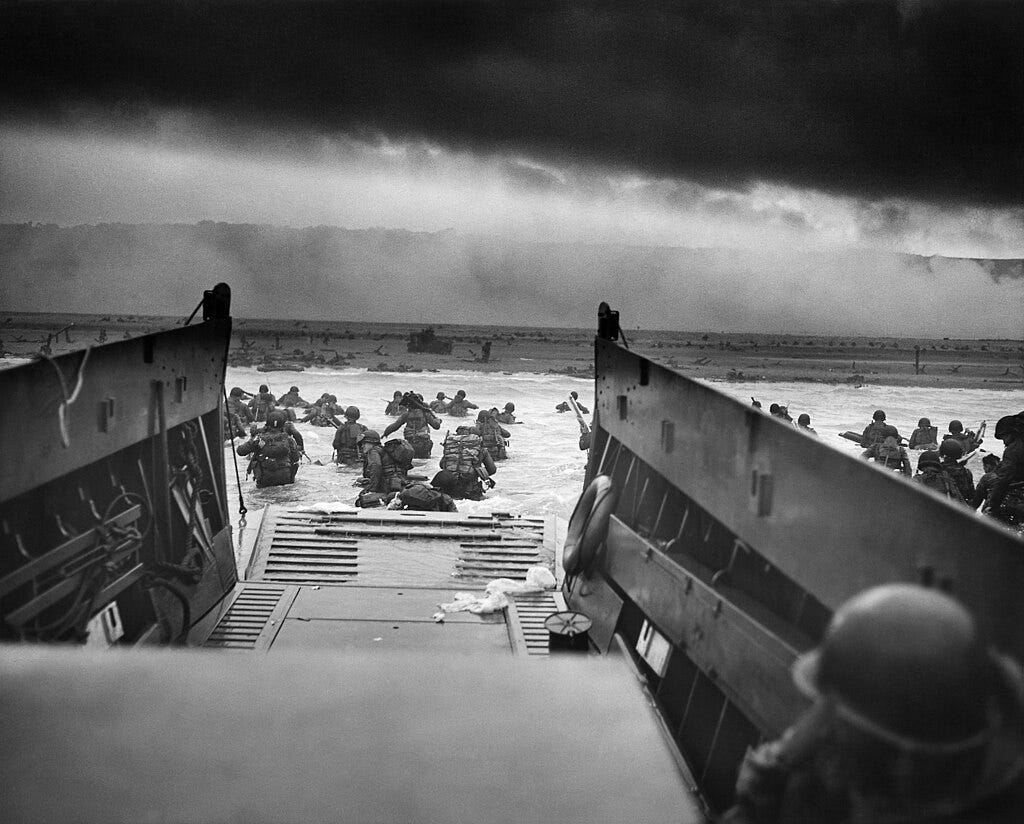
The tour guide took us to different spots, explaining the heroic actions of different men who risked their lives, and in many cases, lost them in order to carry out the operations that led to the victory of the Allied forces on D-Day. Each of these decisions and actions of the individual units were critical, and the events could easily have led to a different outcome if each advance had not been executed as it had.
An excerpt from the order of D-Day from General Dwight D. Eisenhower reads:
“You are about to embark upon the Great Crusade, toward which we have striven these many months. The eyes of the world are upon you. The hope and prayers of liberty-loving people everywhere march with you. In company with our brave Allies and brothers-in-arms on other Fronts, you will bring about the destruction of the German war machine, the elimination of Nazi tyranny over the oppressed peoples of Europe, and security for ourselves in a free world.
Your task will not be an easy one. Your enemy is well trained, well equipped and battle-hardened…
I have full confidence in your courage, devotion to duty and skill in battle. We will accept nothing less than full Victory!
Good luck! And let us beseech the blessing of Almighty God upon this great and noble undertaking.”2
A tribute to a D-Day hero
The tour guide shared stories of many heroes of D-Day. I want to share the story of one of these soldiers. His name was Jimmie Watters Monteith Jr. from Virginia. Jimmie, age twenty-six, had attended Virginia Polytechnic State Institute and State University for two years. He then went to work as a field representative for the company his father was vice president of, Cabell Coal Company.
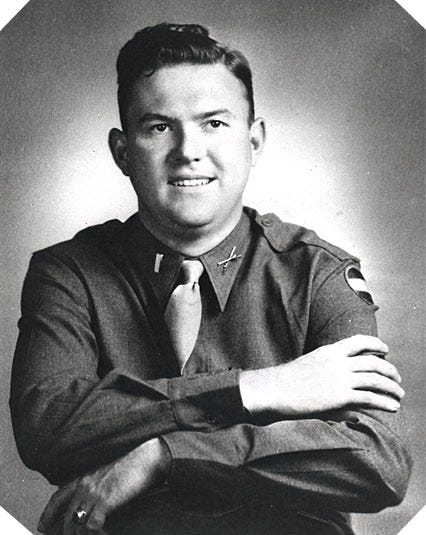
He was drafted into the army in 1941. He worked his way up during his time of service, and before D-Day, he had received a promotion to 1st lieutenant. His division moved to England in November of 1943 to prepare for the invasion.
An excerpt from the citation of Monteith’s posthumous Medal of Honor presented by President Franklin D. Roosevelt reads:
“Without regard to his own personal safety he continually moved up and down the beach reorganizing men for further assault. He then led the assault over a narrow protective ledge and across the flat, exposed terrain to the comparative safety of a cliff. Retracing his steps across the field to the beach, he moved over to where two tanks were buttoned up and blind under violent enemy artillery and machine gun fire. Completely exposed to the intense fire, First Lieutenant Monteith led the tanks on foot through a minefield and into firing positions. Under his direction several enemy positions were destroyed. He then rejoined his company and under his leadership his men captured an advantageous position on the hill. Supervising the defense of his newly won position against repeated vicious counterattacks, he continued to ignore his own personal safety, repeatedly crossing the 200 or 300 yards of open terrain under heavy fire to strengthen links in his defensive chain. When the enemy succeeded in completely surrounding First Lieutenant Monteith and his unit and while leading the fight out of the situation, First Lieutenant Monteith was killed by enemy fire.”3
A visit to the American D-Day cemetery and reflections on heroism
After hearing the story of Lieutenant Monteith and other heroes, we proceeded to the cemetery where the Americans who died in the operation were buried. We were able to witness a flag ceremony that honored the fallen.
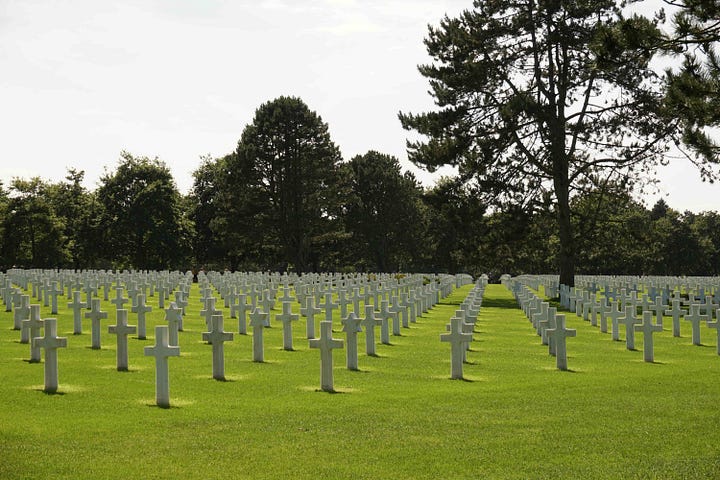
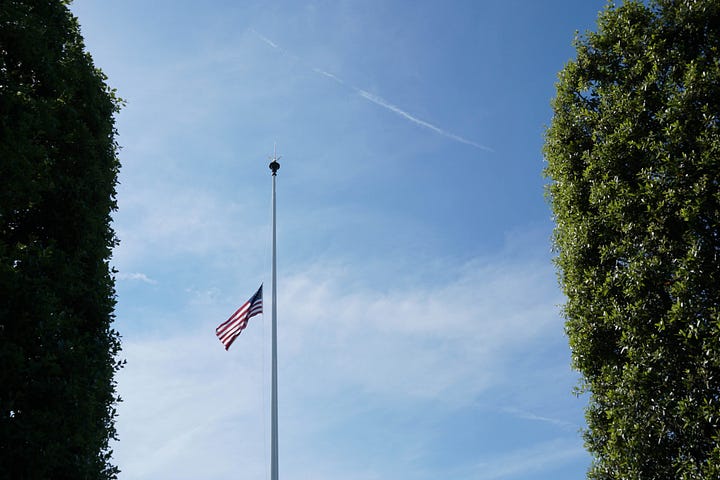
I remember being overcome with emotion. I thought about the fact that men like Lieutenant Monteith had a full life ahead of them, the potential to create families and careers that never would come to be. I thought about how much courage it had to take for these men to go into a situation knowing the likelihood that they would make it out alive was slim, and to fight with such valor.
My grandfather was a soldier in World War II. He died when I was a baby so I never had a chance to learn about his experience firsthand, but from what I have heard, he was not one to talk much about it. It was very emotional to think how men in his same position in life at that time made the ultimate sacrifice, and how thankful we should all be for the willingness of those who laid down their life so the world could live on freely.
I hope you will take a few minutes out today to reflect on the sacrifices made on D-Day. Here is a video about Monteith created by the National D-Day Memorial.
History.com Editors. (May 28, 2024). D-Day. Retrieved from https://www.history.com/topics/world-war-ii/d-day
Milestone documents. (December 9, 2022). General Eisenhower’s Order of the Day (1944). Retrieved from https://www.archives.gov/milestone-documents/
Wikipedia. (April 16, 2024). Jimmie W. Monteith. Retrieved from https://en.wikipedia.org/wiki/Jimmie_W._Monteith


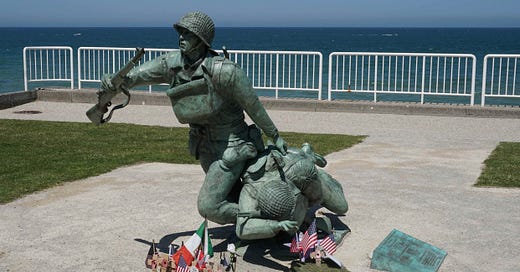




Thanks for sharing these stories. I'm grateful we were able to visit the beaches together.
Sarah, thanks for sharing these stories. As you may recall, I had the opportunity and honor to portray war correspondent Wright Bryan at Oakland Cemetery in 2021. He accompanied paratroopers of the 101st Airborne in the predawn hours of June 6, 1944. On his return to London he made the first eyewitness broadcast of the Normandy invasion.
Ren Davis